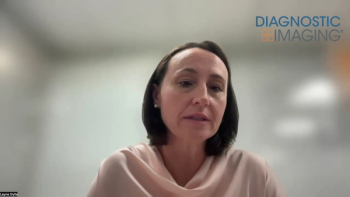
Quality Improvement Program Cuts Inappropriate CCTA Exams
Applying a systematic continuous quality improvement program can significantly reduce the number of inappropriately recommended coronary CT angiography exams.
Applying a systematic continuous quality improvement (CQI) program can significantly reduce the number of inappropriately recommended coronary CT angiography (CCTA) exams, say researchers in a study published online in the
Researchers from Beaumont Hospital in Royal Oak, Mich., undertook a 3.5-year prospective study to define the appropriateness of CCTA exams as part of the Advanced Cardiovascular Imaging Consortium, a statewide CQI initiative sponsored by Blue Cross Blue Shield of Michigan.
A total of 25,287 cases (mean age 58) from 47 participating centers were analyzed before and after a two-year intervention when the sites participated in educational activities that reinforced the appropriate use of CCTA. The sites conducted the continuing education activities as they deemed appropriate for their setting.
The pre-intervention period took place from July 2007 to June 2008, during which the centers were receiving regular CCTA utilization reports as they had been in the past, but no instructions or details on how the tests were to be performed. The follow-up period was from July 2010 to December 2010, again, with no extra information other than the reports.
During the pre-intervention period, the most common appropriate indications for scans included detection of coronary artery disease (CAD) in symptomatic patients who were at low to intermediate risk. Inappropriate scans were for detection of CAD in asymptomatic patients. The most common uncertain indications were patients who were symptomatic but considered to be low risk.
Following the intervention, there was a significant decrease inappropriate orders for CCTA exams, while orders for appropriate CCTA exams increased. Exams for asymptomatic low-risk patients dropped from 73 percent pre-intervention to 57 percent post intervention. Scans among high-risk patients with acute symptoms dropped from 16.7 percent to 13 percent. Appropriate use of scan increased from 75.4 percent to 80 percent.
“The study suggests that voluntary, mutually established quality metrics reinforced by provider education and feedback can succeed in effectuating major changes, with implications extending beyond CCTA,” wrote the authors.
Newsletter
Stay at the forefront of radiology with the Diagnostic Imaging newsletter, delivering the latest news, clinical insights, and imaging advancements for today’s radiologists.



























